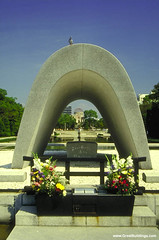Death of an Architect

Kenzo Tange was one of the Japan's first post World WarII architects. He was a major player in the metabolist movement, and educated other architects like Arata Isozaki, Kisho Kurokawa, and Fumihiko Maki. He designed famous buildings like the Hiroshima Peace Center and the Tokyo Metropolitan Government building.

I do think that Tange has made some really great buildings. His addition to the Minneapolis Institute of Art was always one of my favorite spaces growing up, and is a very nice contrast to the heavy classical architecture that the western half of the museum consists of.

But I criticize the contribution his group of metabolists made domestically to Japan. Tokyo, like many other parts of Japan, was devastated from the American fire bombings. They had a completely blank slate to start from, theoretically, and could develop tokyo in any direction. Many people saw the development of Japan as a way of creating a non-western modernism, and the metabolists chose an 'organic' method of growth as opposed to a strong structural one in the west. But 'organic' is simple a way of creating a euphemistic nomenclature for 'sprawl', and Tokyo's standard of living has suffered as a result in my opinion. Many architects, such as Frank Lloyd Wright, praised the different approach to development during the 1960's.
In retrospect, however, I think most would agree that the organic approach to development has caused more problems than solutions. I wrote a paper in a college archtiecture class about Kisho Kurokawa and one of his landmark buildings the Nakagin Capsule Tower. Whatever the purpose of this building, the aesthetic of the building strips away any humanity or sensitivity of architecture creating, as Le Corbusier would have wanted, a 'machine for living'.
At a recent architecture exhibit, I bought a fascinating book was for sale by the developer Mori, discussing the problems of Tokyo's post war developments. Roads are narrow, so delivery of goods and services is stunted and difficult. Expressways were built over rivers to leave room for other development, etc.
Architecturally, I do think Japan has refined the use of concrete as a material, and gone from the brutalism of the 60's to an beautiful at times seemingly religious in its minimalism.
Thank you Kenzo Tange, you left us with a mixture of architectural gems and fuctional urban chaos.
Read the whole post.


